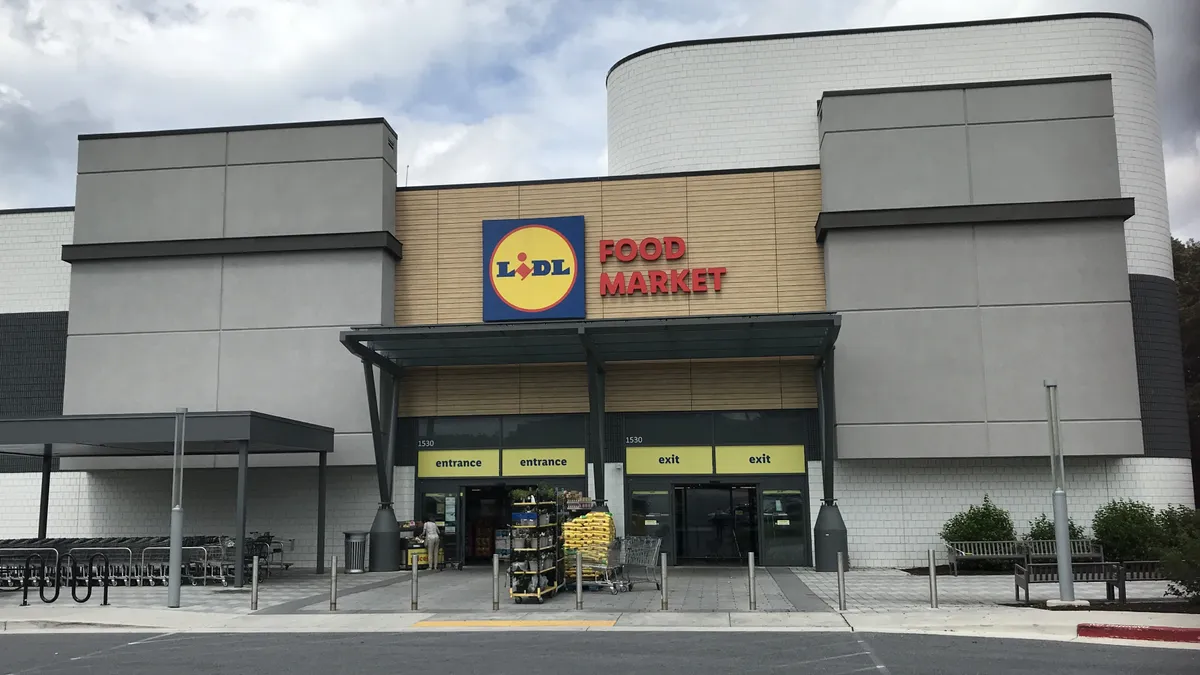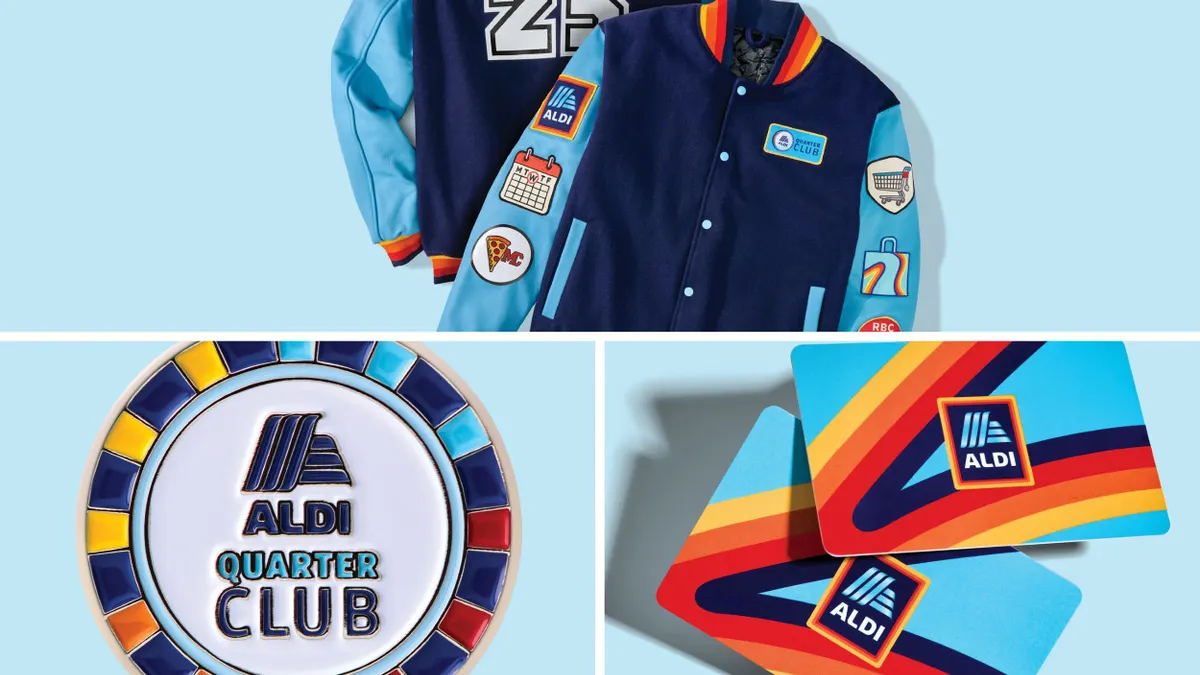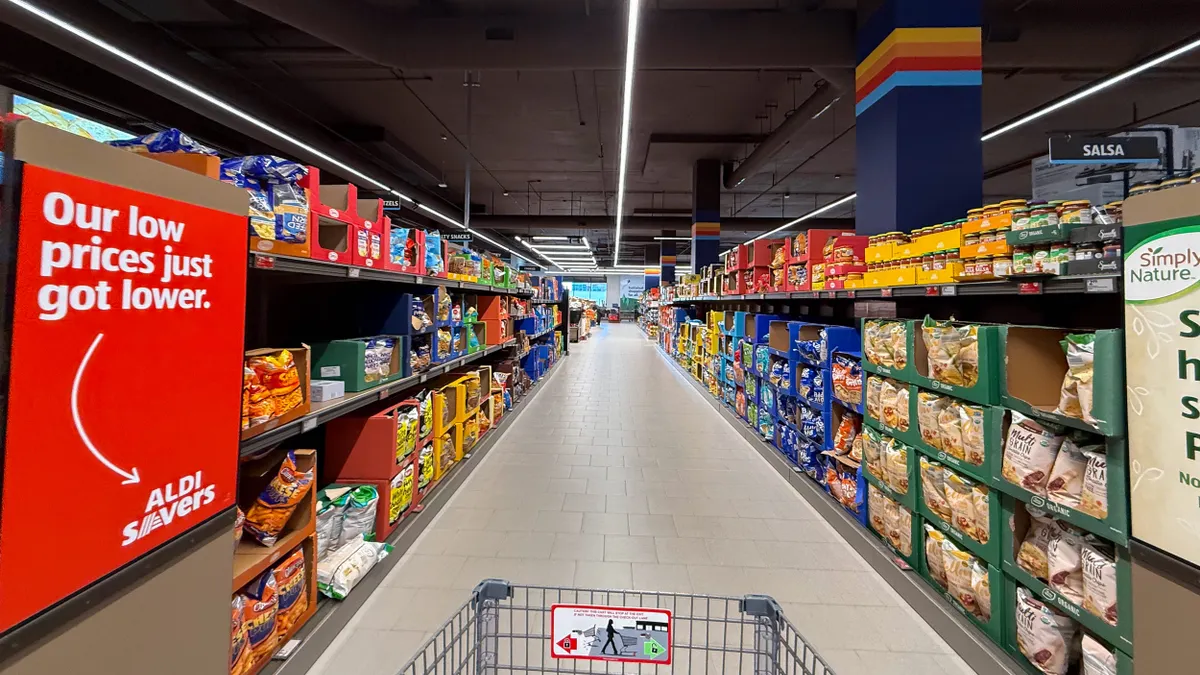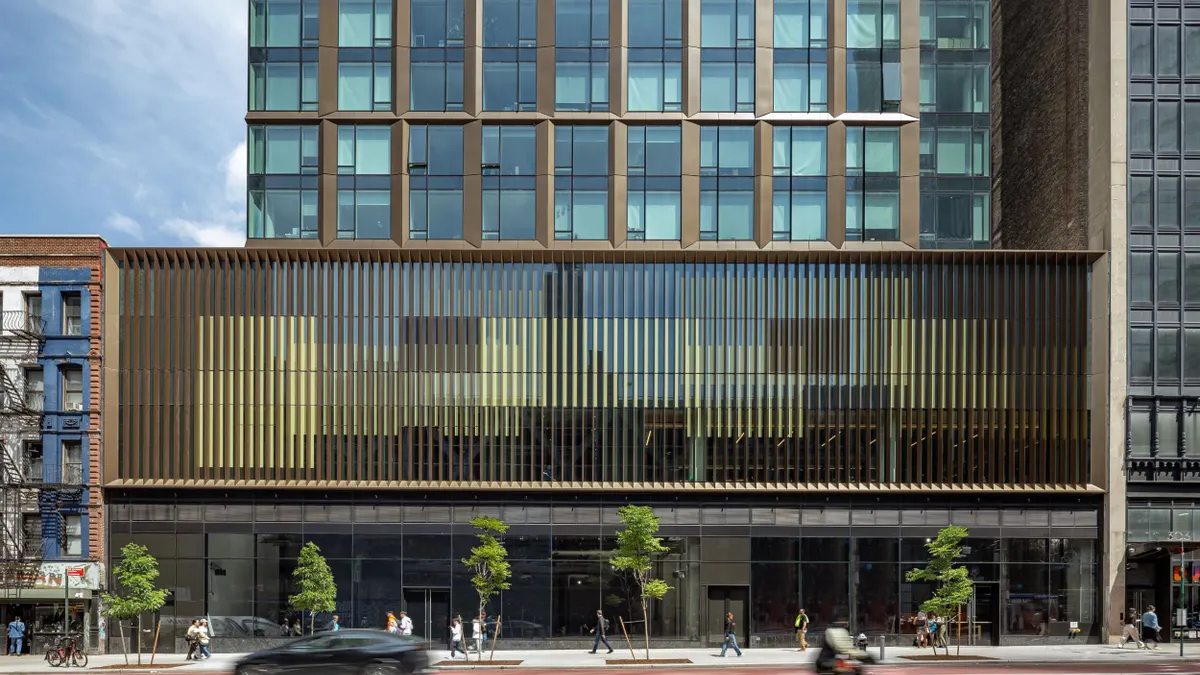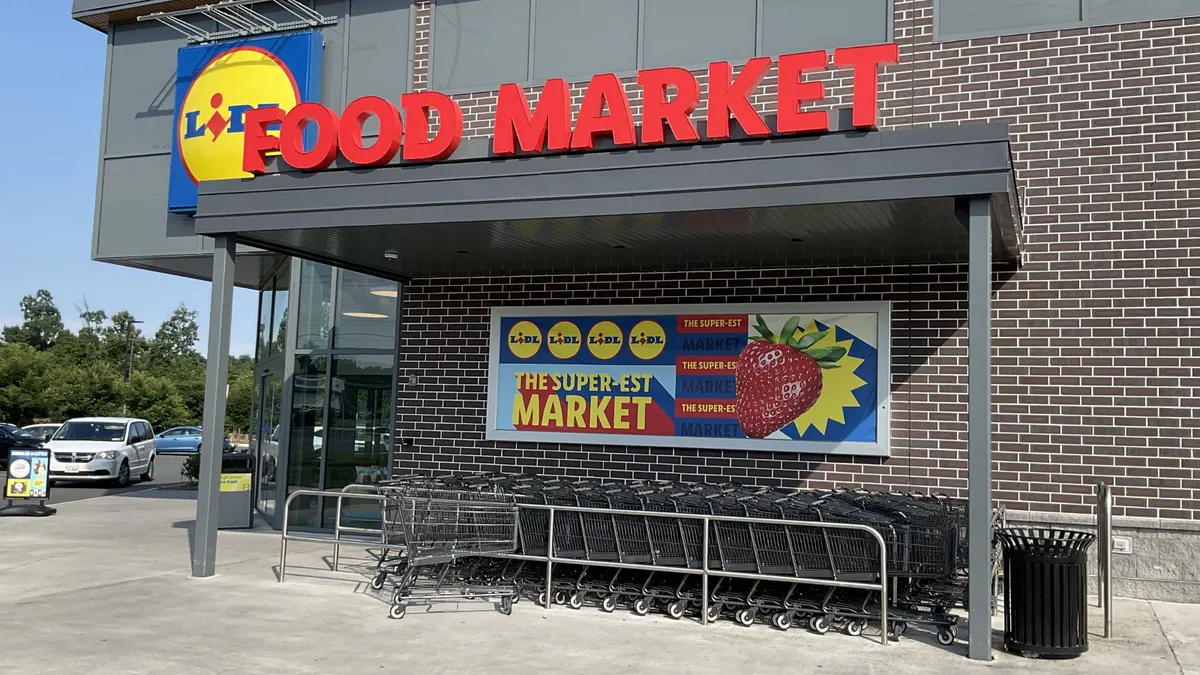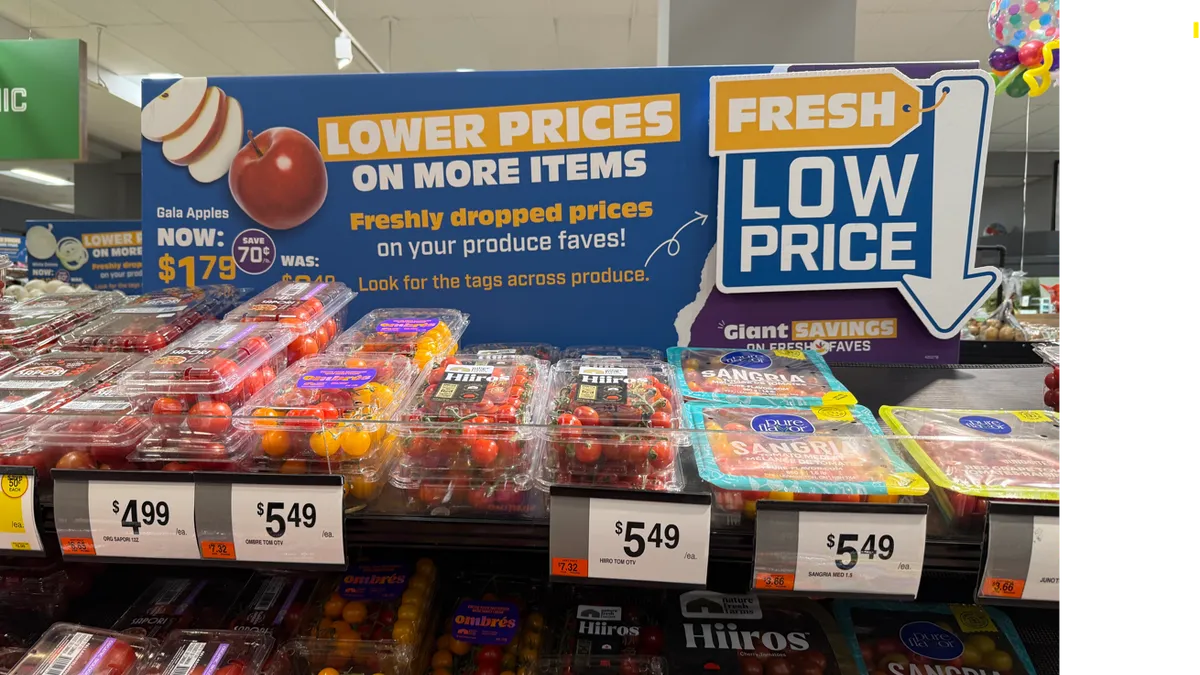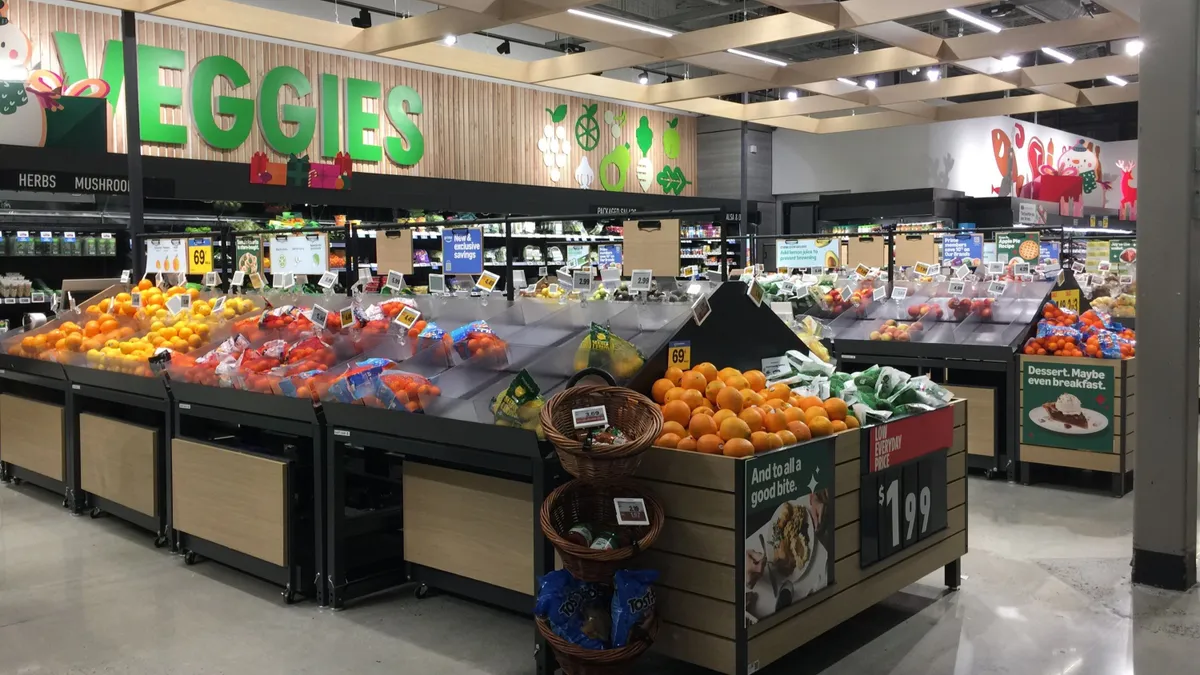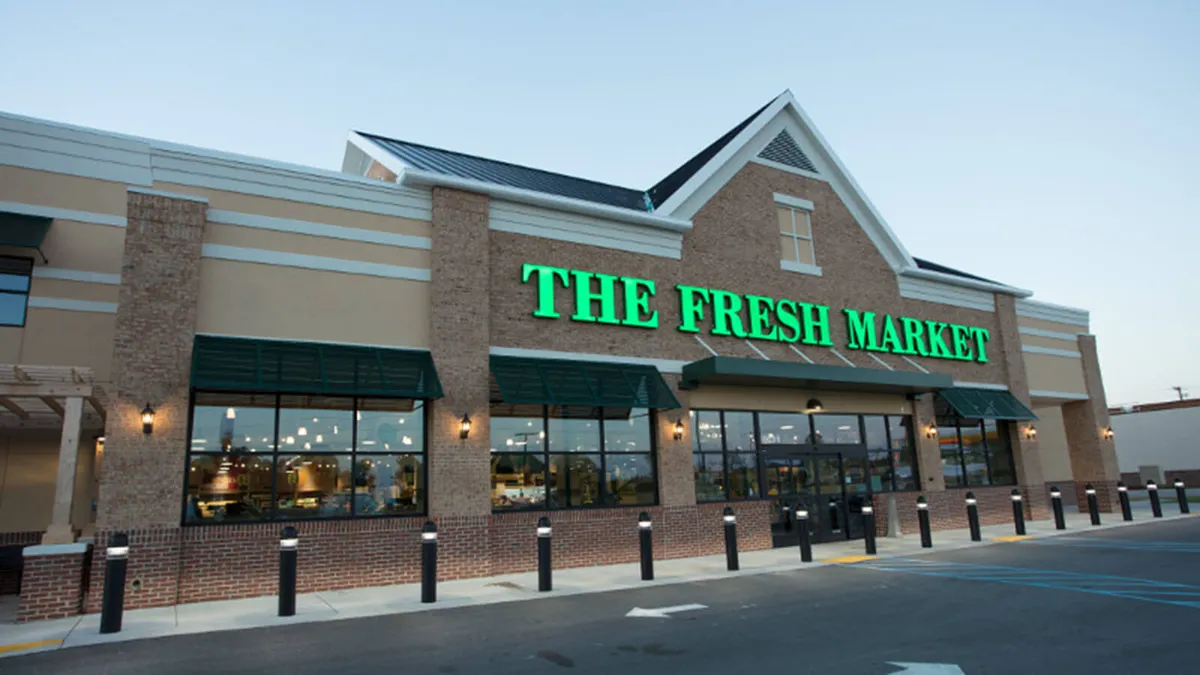LAS VEGAS — Lidl will relaunch its brand in the United States next week in a bid by the German discount grocery chain to improve its name recognition after years of struggling to build momentum on this side of the Atlantic, according to a top executive of the company’s U.S. division.
The marketing campaign, which carries the tagline “The Super-est Market,” represents the largest investment the grocer has made in building its brand in the U.S. since it arrived in this country, Lidl US Chief Customer Officer Frank Kerr said Tuesday during a panel session at Groceryshop. The campaign will kick off on Oct. 16, Kerr said after the session.
“The customer experience and the customer journey is not just how they engage with you with their phone in their hand or when their feet are in your store. It’s also how your brand makes them feel and what reminds them of your brand, and that’s what we’ve really tried to try to get at,” Kerr said. “We want to be more of an emotional, connected brand.”
Kerr said the rebranding effort reflects research the company conducted that showed that only 58% of people in the parts of the U.S. where it operates “knew we were a grocery store.” To counter that, the company engaged a creative agency to devise a campaign that would position Lidl as a supermarket chain and also “leverage our superpowers as a brand,” he said.
Lidl opened its first store in the U.S. in 2017 and currently operates around 170 stores in nine East Coast states and Washington, D.C. The company — which operates grocery stores in more than 30 countries — announced plans to open several new stores during the past few weeks, including locations in the New York City and Washington, D.C., areas, but its growth trajectory in the U.S. remains well behind other grocers, including its German archrival, Aldi.
In an illustration of the urgency Lidl has assigned to the U.S. rebranding effort, Kerr said the company squeezed “probably two years worth of work” into six months.
Kerr indicated that Lidl is hoping it will be able to convince grocery shoppers to become passionate about its brand so they will help propel it, adding that its research shows that most people view grocery shopping as an errand.
“Customers will complain or they may leave you. Fans will not. Fans will stay loyal, and fans will stick with your brand, and fans are excited to tell others about the discovery of your brand,” he said.
Part of Lidl’s effort to better connect with shoppers in the U.S. will center on consistently using specific colors — drawn from its corporate colors of red, yellow and blue — across all marketing channels to represent essential elements of its brand, according to Kerr. For example, Lidl will use red whenever it wants to telegraph a discounted price or aggressive deal, he said.
Lidl has also focused heavily on retooling its assortment and rethinking how it makes decisions about the products it carries as it changes course in the U.S.
Kerr noted that the company has recently made adjustments to about 40% of its everyday SKUs through changes like switching to a new supplier, replacing the packaging “or just a complete flip of the direction of that category,” he said, describing the revamp as “a massive undertaking” for Lidl US. Lidl carries about 4,000 SKUs on its shelves year-round, he said.
In May, Lidl announced plans to overhaul its meat and poultry selections ahead of July Fourth.
Kerr noted that Lidl’s business model is built around leveraging its stable of private labels and selected national brands to drive sales volume, which made finding the right mix of products a top priority for him and his team.
“It was really critical for us to get back to the core of who we are, and that is we are a business that operates on throughput and the value of fast nickels, and our assortment did not reflect that,” Kerr said.
Kerr added that the company used to make choices about items it sells without fully taking data about its customers into account because various teams operated independently of each other, but has made adjustments to remedy the issue since the beginning of 2024.
“These decisions were made previously very much in a silo,” Kerr said, adding that “there was a big gap in connecting the insights of our customers and helping our merchants make key strategical decisions into category growth. So, ultimately, that was one of the first orders of business that we had.”



